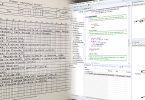As a new DBA or application developer, you may have many questions around the BIND command. What is it? Why is it necessary? Where do DBRM’s come from? What is a -805 SQLCODE and how do I fix it? At IDUG NA in Charlotte this year, I will be presenting a session entitled, “A15 – How You Can BIND Without Tying Yourself Up!” (currently scheduled to be held on Thursday June 6th at 9:30am, in the Carolina A room), where I hope to clear up much of this confusion.
The presentation will take the mystery out of the BIND command, discussing common issues with the command itself and sharing proven techniques to resolve them.
A BIND is a BIND is a BIND…or is it?
You can bind a PACKAGE, bind a PLAN, bind a SERVICE, or bind a QUERY. In my session, I will focus on BIND PACKAGE, with some information about BIND PLAN. These are the key types of binds that your development teams must use to prepare applications to execute SQL and, ultimately, access data on Db2 for z/OS.
You’ve probably seen job control language (JCL) to invoke a bind as part of the process of developing and deploying application code that executes SQL to access data on Db2 for z/OS. We will look at the details of the process and some of what is going on behind the scenes.
Untangling the Mysteries of BIND
During the presentation, I’ll be answering questions about the BIND command that I’ve received over the years, including:
- Why Do I Need to Bind?
If you have executed the BIND command, you have probably asked yourself that question. Why is there this extra step after coding a program? We will be discussing the mechanics of the BIND command and its JCL, as well as the inputs to and outputs of the bind process. - How Do I Bind a COLLECTION?
A COLLECTION can be one of the more confusing concepts, so we will look at the different names associated with packages, collections, and plans, and clarify the naming conventions, which are a rich source of confusion. - What Can I Find in the Catalog?
We will spend some time discussing the catalog tables and columns associated with packages and plans, and share some SQL you can use to extract information about your own Db2 applications from the catalog.
How Many Parameters Did You Say?
The Db2 12 documentation shows 66 separate parameters for the BIND command! Some of them even have sub-parameters. This is a very rich command, which is a polite way of saying it has a lot of complexity. How do you know which parameters are critical versus merely important? Which parameters can I learn about later, or as I need to? This session will help you to recognize the critical parameters that you must always get correct.
I’ll also talk about the parameters and rationale behind versioned packages and how to exploit this feature, as well as how they control Access Path Stability.
And whether you are able to attend IDUG or not, be sure to reach out to your BMC account team or a BMC Sales person to learn more about how BMC can help you manage your z/OS and Db2 environments to improve performance, raise productivity, and avoid risk.
Hope to see you at IDUG
These postings are my own and do not necessarily represent BMC's position, strategies, or opinion.
See an error or have a suggestion? Please let us know by emailing blogs@bmc.com.






